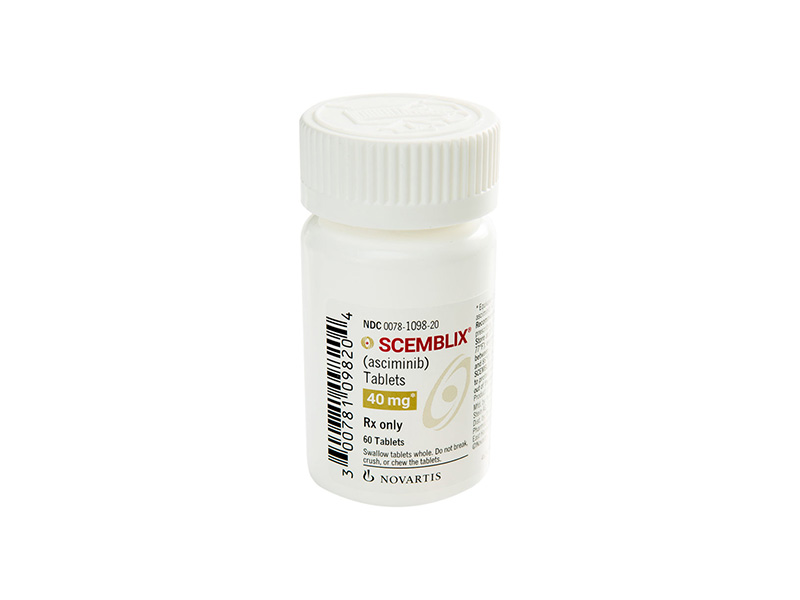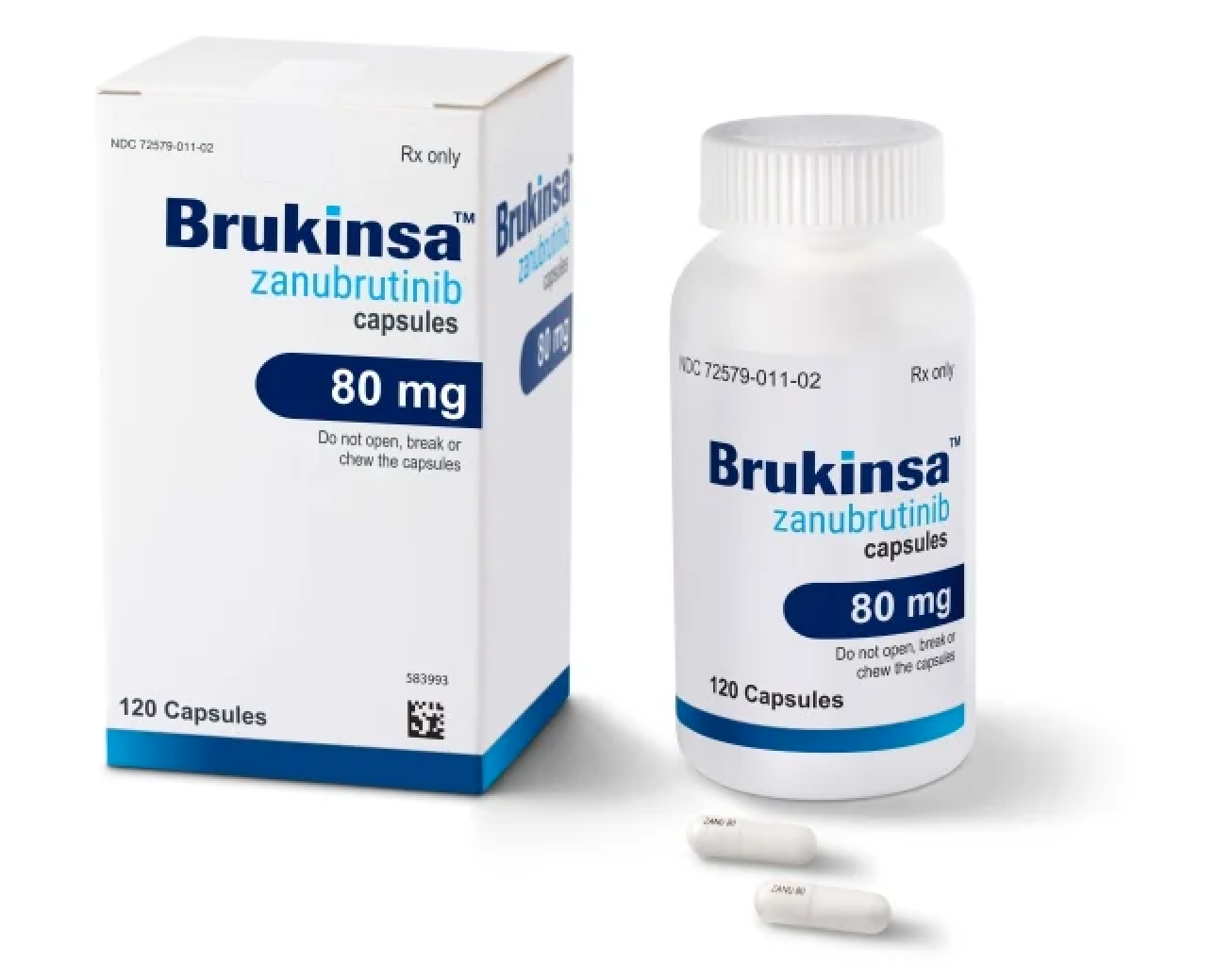Scemblix (asciminib) vs Brukinsa (zanubrutinib)
Scemblix (asciminib) vs Brukinsa (zanubrutinib)
Scemblix (asciminib) and Brukinsa (zanubrutinib) are both targeted therapies used in the treatment of certain types of blood cancers, but they work in different ways and are approved for different indications. Scemblix is a STAMP inhibitor specifically approved for the treatment of chronic myeloid leukemia (CML) in adult patients who have received two or more prior treatments, or who have the T315I mutation. In contrast, Brukinsa is a Bruton's tyrosine kinase (BTK) inhibitor used for the treatment of mantle cell lymphoma (MCL) in adults who have received at least one prior therapy, and for certain patients with Waldenström's macroglobulinemia and marginal zone lymphoma. When deciding on the right medicine, it is crucial to consider the specific type of blood cancer, the patient's previous treatments, and the drug's mechanism of action, as well as consulting with a healthcare provider.
Difference between Scemblix and Brukinsa
| Metric | Scemblix (asciminib) | Brukinsa (zanubrutinib) |
|---|---|---|
| Generic name | Asciminib | Zanubrutinib |
| Indications | Chronic myeloid leukemia (CML) | Mantle cell lymphoma (MCL), Waldenström's macroglobulinemia |
| Mechanism of action | ABL kinase inhibitor | Bruton's tyrosine kinase (BTK) inhibitor |
| Brand names | Scemblix | Brukinsa |
| Administrative route | Oral | Oral |
| Side effects | Thrombocytopenia, neutropenia, anemia, musculoskeletal pain | Neutropenia, thrombocytopenia, anemia, diarrhea, bruising |
| Contraindications | Hypersensitivity to asciminib | Hypersensitivity to zanubrutinib |
| Drug class | Tyrosine kinase inhibitor | Bruton's tyrosine kinase inhibitor |
| Manufacturer | Novartis | BeiGene |
Efficacy
Scemblix (Asciminib) Efficacy in Chronic Myeloid Leukemia (CML)
Scemblix, with the active ingredient asciminib, is a targeted therapy approved for the treatment of adult patients with chronic myeloid leukemia (CML) in chronic phase. Specifically, it is indicated for patients who have previously received two or more tyrosine kinase inhibitors (TKIs). Asciminib operates by binding to the ABL myristoyl pocket of the BCR-ABL kinase, which is a different mechanism compared to other TKIs. Clinical trials have demonstrated that asciminib is effective in reducing the number of cancerous cells in the blood and bone marrow in patients with CML. The efficacy of asciminib has been measured by the rates of major molecular response (MMR) and complete cytogenetic response (CCyR) in patients who are resistant or intolerant to prior TKI therapy.
Brukinsa (Zanubrutinib) Efficacy in Chronic Lymphocytic Leukemia (CLL)
Brukinsa, which contains zanubrutinib as the active substance, is a Bruton's tyrosine kinase (BTK) inhibitor used for the treatment of mantle cell lymphoma (MCL) and is being studied for its efficacy in chronic lymphocytic leukemia (CLL). While not yet approved for CLL, clinical studies have shown promising results. Zanubrutinib has been designed to maximize BTK occupancy and minimize off-target effects, potentially improving patient outcomes. In clinical trials, zanubrutinib has demonstrated high rates of overall response and durable responses in patients with CLL, suggesting its potential as an effective treatment option for this patient population.
Efficacy Comparisons and Considerations
When comparing the efficacy of Scemblix and Brukinsa, it is important to note that they are used for different types of leukemia and work through distinct mechanisms of action. Scemblix is specifically indicated for CML, while Brukinsa is being investigated for CLL and is approved for MCL. Each medication's efficacy is evaluated based on the type of leukemia it is designed to treat, and their effectiveness is supported by clinical trial data that demonstrate significant clinical responses in their respective patient populations. The choice of treatment will depend on the specific type of leukemia, the patient's previous treatment history, and the drug's safety and efficacy profile.
Conclusion
In conclusion, both Scemblix and Brukinsa have shown efficacy in treating different forms of leukemia. Scemblix has been approved for use in CML after resistance or intolerance to prior TKI therapy, and it has shown to be effective in achieving molecular and cytogenetic responses. Brukinsa, while not yet approved for CLL, has exhibited high response rates in clinical trials and may offer a new treatment option for patients with CLL in the future. It is critical for healthcare providers to stay informed about the latest clinical data and treatment guidelines to optimize care for patients with leukemia.
Regulatory Agency Approvals
Scemblix
-
Food and Drug Administration (FDA), USA

Brukinsa
-
European Medical Agency (EMA), European Union

-
Food and Drug Administration (FDA), USA

Access Scemblix or Brukinsa today
If Scemblix or Brukinsa are not approved or available in your country (e.g. due to supply issues), you can access them via Everyone.org.
How it works

Make an enquiry
Choose the medicine you want to buy, answer a couple of questions, and upload your prescription to speed things up. We’ll get back to you within 24 hours.


Make an enquiry
Choose the medicine you want to buy, answer a couple of questions, and upload your prescription to speed things up. We’ll get back to you within 24 hours.


Breeze through the paperwork
We'll guide you through the required documents for importing unapproved medicine, ensuring you have all the necessary information.


Get a personalized quote
We’ll prepare a quote for you, including medicine costs and any shipping, administrative, or import fees that may apply.


Receive your medicine
Accept the quote and we’ll handle the rest - sourcing and safely delivering your medicine.

Some text on this page has been automatically generated. Speak to your physician before you start a new treatment or medication.
Let's talk
If you have any questions, call us or send us a message through WhatsApp or email:
Contact us




